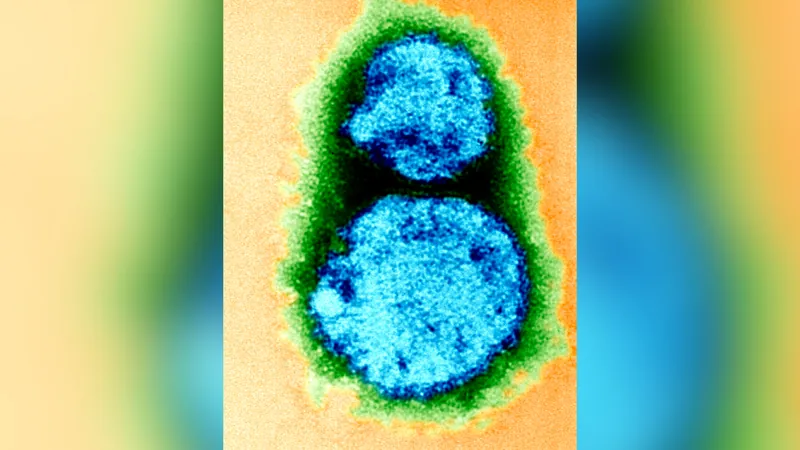
Hantavirus: The Deadly Rodent-Borne Threat You Need to Know About!
2025-04-10
Author: Siti
What is Hantavirus?
Hantavirus is a rare yet potentially lethal respiratory illness caused by a family of viruses typically carried by rodents, including rats and mice. This disease poses a significant risk, particularly in rural areas and regions where humans frequently encounter these animals.
The Alarming Facts: Cases and Areas Affected
Between 1993 and 2022, the United States reported 864 cases of hantavirus disease, with New Mexico leading the statistics at 122 cases. Colorado follows closely behind with 119 cases, and Arizona with 86. These numbers highlight the urgent need for awareness, especially among certain populations.
Who’s at Risk?
Individuals who work in environments where they come into contact with rodents—such as forestry workers, farmers, and trappers—are at heightened risk of contracting hantavirus disease. This dangerous illness thrives where humans and rodents cross paths.
How Do You Get Infected?
The transmission of hantaviruses to humans primarily occurs through exposure to the urine, droppings, or saliva of infected rodents. Touching contaminated surfaces and then rubbing your eyes can also lead to infection. Additionally, disturbing contaminated debris can aerosolize the virus, making it easier to inhale. In rare cases, bites from infected rodents can transmit the disease.
The Two Faces of Hantavirus Infection
Once contracted, hantaviruses can lead to two serious conditions: Hantavirus Pulmonary Syndrome (HPS) and Hemorrhagic Fever with Renal Syndrome (HFRS). While the latter is more common in Europe, Asia, and Africa, HPS leads to severe respiratory complications primarily in the Americas.
Infection Symptoms: What to Watch For
Symptoms for HFRS generally appear within two to four weeks and may include fever, severe headaches, gastrointestinal distress, kidney dysfunction, and potentially, internal bleeding. HFRS severity varies depending on the specific hantavirus, with case fatality rates ranging from 1% to 15%. HPS symptoms can take as long as eight weeks to develop. Initial signs include fever, chills, and extreme fatigue, which can escalate to organ failure and severe respiratory issues. Tragically, 38% of patients exhibiting respiratory symptoms may succumb to HPS.
Managing the Threat: Treatment and Prevention
Currently, there is no cure for hantavirus disease; treatment is primarily focused on relieving symptoms. Medical professionals may provide supportive care such as respiratory assistance or dialysis for those experiencing significant kidney damage. To prevent exposure, the Centers for Disease Control and Prevention (CDC) advises minimizing contact with wild rodents. This can be achieved by sealing potential entry points in homes and utilizing traps or professional pest control services if infestations occur.
Stay Informed, Stay Safe!
Understanding hantavirus is crucial for anyone working or living in areas where rodent populations are prevalent. By taking the proper precautions and being aware of the symptoms, you can protect yourself from this deadly but often overlooked virus.




 Brasil (PT)
Brasil (PT)
 Canada (EN)
Canada (EN)
 Chile (ES)
Chile (ES)
 Česko (CS)
Česko (CS)
 대한민국 (KO)
대한민국 (KO)
 España (ES)
España (ES)
 France (FR)
France (FR)
 Hong Kong (EN)
Hong Kong (EN)
 Italia (IT)
Italia (IT)
 日本 (JA)
日本 (JA)
 Magyarország (HU)
Magyarország (HU)
 Norge (NO)
Norge (NO)
 Polska (PL)
Polska (PL)
 Schweiz (DE)
Schweiz (DE)
 Singapore (EN)
Singapore (EN)
 Sverige (SV)
Sverige (SV)
 Suomi (FI)
Suomi (FI)
 Türkiye (TR)
Türkiye (TR)
 الإمارات العربية المتحدة (AR)
الإمارات العربية المتحدة (AR)